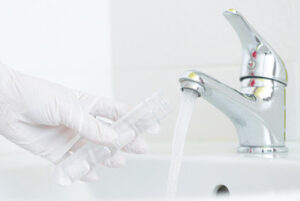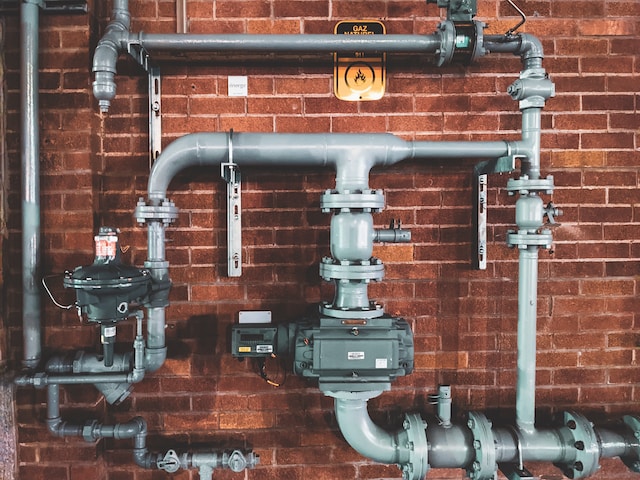A qualified lab does Water Quality Testing Colorado to measure the concentration of harmful contaminants. Those contaminants include germs and chemicals such as lead, arsenic, mercury, and radium.

Tests such as dissolved oxygen (DO) and conductivity are important for monitoring changes in water quality, especially those that occur over time.
Water testing procedures help ensure that the water used in industrial processes or as a drinking water source meets strict parameters set by local governments. These parameters are often based on laws regulating safe levels of specific contaminants. Water testing involves a range of tests to determine the physical, chemical, and biological characteristics of water. This includes sampling techniques, physical and chemical parameter measurements, laboratory analysis, and data interpretation.
A core physical water quality parameter is electrical conductivity. Conductivity indicates the concentration of inorganic and organic substances dissolved in water, including salts, minerals and other compounds. It also helps in determining the presence of a toxic heavy metal such as lead, mercury or arsenic. It is also useful in assessing the state of water’s temperature, which influences odors, chemical reactions and solubility.
Another physical parameter is turbidity. This is a measure of how much clay, silt or other fine particles are suspended in water. It also serves as a marker for the presence of pathogens and bacteria. Water with high turbidity readings may appear cloudy and opaque. To measure turbidity, the water is usually run through a sensor/meter known as a nephelometer and measured in Nephelometric Turbidity Units (NTU) or Formazin Turbidity Units (FTU).
Other physical parameters include pH, acidity, alkalinity, chlorine, hardness and dissolved oxygen. The latter indicates how much oxygen is available to water organisms and, if low, it can indicate the existence of organic contaminants that deplete the dissolved oxygen. Nutrient testing is essential to detect excess levels of nitrates, phosphates and other nutrients that promote excessive algae growth and deplete the dissolved oxygen, leading to harmful conditions called eutrophication.
Biological parameters can detect the presence of harmful bacteria, viruses and parasites that can cause diseases such as cholera, typhoid fever and infectious hepatitis. For example, fecal coliform bacteria serve as indicators for fecal contamination and can be indicative of human or animal waste. Viruses are another indicator of potentially harmful microorganisms in water and are tested using a specialized viral detection test.
Chemical Parameters
The chemical water parameters measure characteristics that reflect the environment with which water comes into contact. They include a number of measurements like pH levels, hardness, dissolved oxygen, biological oxygen demand and total dissolved solids. These parameters are determined by analyzing the samples in laboratories using specialized equipment and techniques. They are then compared with testing standards to determine compliance and identify potential contamination risks.
Some physical water parameters are observed through the senses. For example, the taste of a sample may change or an odor develop as a result of foreign matter being introduced to the water. This material can include organic materials, dissolved gases and inorganic compounds that originate from agricultural, natural or domestic sources. Similarly, the ability of water to conduct electricity, also known as electrical conductivity, is a core physical parameter. This is due to the concentration of ions within a water sample and can be indicative of the presence of other chemicals like salts and minerals.
Another core physical measurement is dissolved oxygen, which can be found in lakes, rivers and streams. It’s important for aquatic plants and animals to have sufficient dissolved oxygen in their environments. When the levels are low, it can lead to stress and even death. Consequently, dissolved oxygen is a critical water quality parameter that must be regularly tested.
Other key chemical measures include pH level, which can tell you how acidic or basic a water sample is. It’s important that the pH of drinking water fall within a healthy range, which is usually between 6.5 and 8.5. Water hardness refers to the amount of dissolved minerals like calcium and magnesium in the sample. This can be a problem for boilers and pipes as it increases the rate of corrosion. Alkalinity, which is the ability of a sample to neutralize acids, is also an essential water quality parameter.
Biological and microbiological parameters can also be measured in the laboratory. These test for things like fecal coliform bacteria, which indicate whether the water has been contaminated with human waste, and indicator bacteria such as E. coli, which can cause diseases like cholera and typhoid fever. In addition, tests can be conducted for nutrients in water. Excess levels of nitrates and phosphates can lead to eutrophication, which depletes the oxygen in a stream ecosystem, leading to toxic algae blooms and causing environmental problems.
Bacterial Parameters
A lot of dangerous waterborne diseases can be caused by bacteria. Some of these include typhoid and paratyphoid fever, leptospirosis, tularemia, shigellosis, and cholera. Bacterial analysis is a key water quality parameter that needs to be measured on a regular basis. It involves taking a sample of the water and filtering it through a flat paper-like disk that has uniform microscopic pores that retain bacteria on its surface while allowing the sample to pass through. The sample is then placed in a petri dish that contains a special culture medium to feed the bacteria.
The results from this are then compared to a standard and can help determine whether the water is safe for human consumption. A high number of bacteria in the water can indicate that sewage, animal waste or other excremental pollution has contaminated the water.
Alternatively, a low number of bacteria can indicate that the water is free from contamination. A high concentration of organic material in the water, such as decomposing weeds and algae, can also cause water to have a foul taste. Chlorine, which doesn’t occur naturally in water, can be added to help remove the odour and taste of contaminated water.
Despite the fact that the majority of harmful contaminants can be removed with the use of effective water pollution solutions, it’s still important to regularly test the water for the various parameters mentioned above. This helps ensure that the drinking water is safe for human consumption and that other natural water sources are free from toxic pollutants, potential biological contaminants and other environmental hazards. Consistent testing also helps identify the source of the contamination and stop it in its tracks before it causes too much harm. This is why federal, state and local regulations mandate certain testing parameters for different types of water sources. It’s up to the water industry to comply with these rules in order to preserve optimal water quality.
Total Dissolved Solids
Total dissolved solids is an important water quality parameter that measures the weight of soluble salts and other inorganic materials dissolved in a given volume of water. In simple terms, the test results tell you how much sodium, potassium, calcium, magnesium, and other inorganic materials are present in the water supply. This measurement is typically a good indicator of a water’s hardness and mineral content. Water with very little dissolved material can taste flat and may have acidic levels that are unhealthy over the long term.
The test itself involves filtering a sample of water, evaporating it, and weighing the solids left behind to calculate the TDS. TDS testing is often performed by laboratory professionals to ensure accuracy and to provide a complete picture of your water. However, it is possible to purchase a device designed to give you a home TDS reading, usually for about $100 or less. While a TDS meter isn’t as accurate as a laboratory test, it can help you determine the presence of inorganic compounds that could affect your health and wellbeing.
Some dissolved substances, such as heavy metals and organic materials, can be dangerous in high concentrations. These pollutants often come from agricultural and industrial runoff that can contaminate lakes, rivers, and streams. In addition, sediments from flooded areas can wash into rivers and streams during a rainstorm and add to the TDS in the water.
When you have a high TDS level, it can make your water taste unpleasant and cause issues with piping and fixtures in your home. It can also mean that there are elevated amounts of trace metals like lead and arsenic in the water, which can be harmful to your health.
Water is a universal solvent, which means it is capable of absorbing many different substances from the environment. The most common substances absorbed by water are minerals, salts, and dissolved solids. A water quality testing company will analyze your drinking water for all of these elements, including bacteria, dissolved solids, and metals. They will then give you detailed information about your water that will help you improve your household’s drinking water quality.
